Let’s make a comparison chart table to weigh up and know all the qualities of both Retinol and Tretinoin in a clearly understanding way.
| Retinol | Tretinoin |
| Can get Retinol Over the counter or in cosmetics | Tretinoin Needs prescription |
| Recommended % range to use Retinol = .25-01% | Recommended % range to use Tretinoin =0.01-01% |
| Milder compared to tretinoin | Very potent |
| Retinol can’t be used in pregnancy or nursing | Tretinoin can’t be used in pregnancy or nursing |
| Less effective than tretinoin | 20 times more effective than retinol |
| Builds collagen and elastin and treats mild to medium acne. | Tretinoin is prescribed to treat severe acne, all skin aging signs, and photodamaged skin |
| Not FDA-approved for photoaging | the only FDA-approved retinoid for photoaging |
| Can be used only at nighttime | Can be used only at nighttime |
Tretinoin and Retinol both come from the family of Retinoid- The parent.
What is Retinoid?
Retinoid is a derivative of Vitamin A (God for skin) that gets converted by skin enzymes into Retinoic acid. Now, Retinoid is frequently confused with Retinol (also a derivative of vitamin A) but Retinol has a lower percentage of Retinoic acid (that’s why less potent) than Retinoid hence Retinol is easily available over the counter, while Retinoid needs a prescription.
Retinoid is basically an umbrella name for all the vitamin A ingredients you can find in the market therefore, it’s the head of the family with 7 kids.
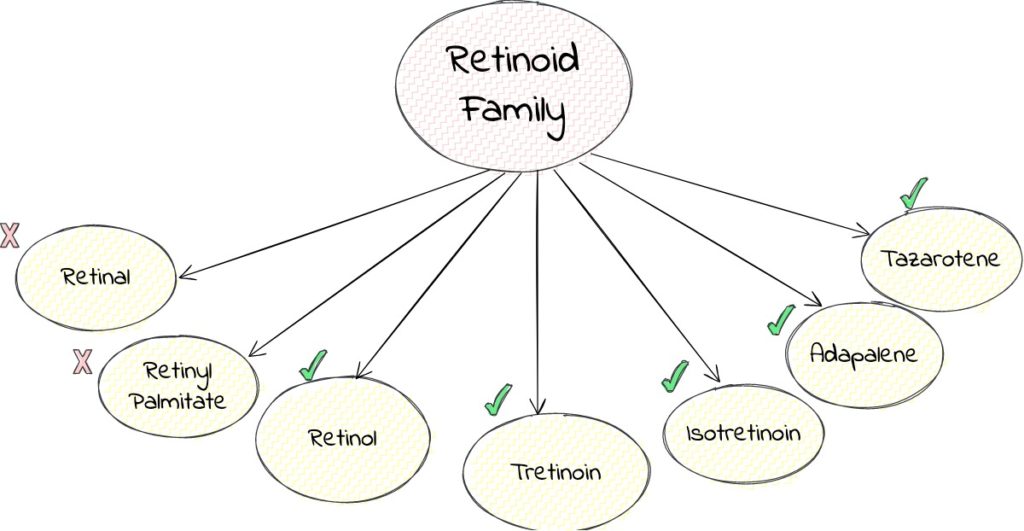
- Retinol
- Retinyl Palmitate
- Retinal
- Tretinoin/Retinoic acid/Retin-A
- Adapalene
- Tazarotene
- Isotretinoin
Retinol
- The most popular kid of all. Retinol is mild and hence can be found over the counter. It is y superb for treating skin concerns like wrinkles, fine lines, improving overall skin tone and pigmentation, increasing collagen production by going into the deep layers of the skin, treating acne, eliminating dead skin cells, and generating fresh ones for younger-looking skin.
- Recommended Percentage – 0.25-1%.
- If you’re a beginner, start with 0.25%, 3 times a week and gradually increase to 1%, every other night.
Retinyl Palmitate
- This stuff is pretty pointless according to the research and me. It is the weakest retinoid of all. Its skin penetration ability is also questionable so it has no retinoid fighting power, therefore, a waste.
- Still Recommended Percentage – 1%
Retinal
- Retinal retinoids are also not the most effective retinoids because of their serious stability issues hence not even easy to find in products.
- They just have slightly more efficacy than Retinol.
- Recommended Percentage – 0.1-1%
Tretinoin /Retinoic acid/Retin-A
- This is the gold standard topical Retinoid, a total bomb ingredient with the longest history of skin benefits.
- It is the most powerful acne treatment. It is also used to treat aged and damaged skin with all sorts of fine lines and wrinkles on the face. It also treats sun damage and is said to be 20 times more effective than retinol, therefore use it with precautions.
- You get Tretinoin aka Retinoic acid only by prescription.
- Recommended Percentage – 0.01-0.1%
Adapalene
- This topical retinoid has solid data on acne treatment. The exciting part is, this amazing ingredient recently became available as an over-the-counter ingredient making life easy.
- This synthetic retinoid has been shown to be gentler than tretinoin. It also helps in clearing acne marks.
- FYI: Don’t exceed the quantity of Adapalene gel more than a pea size.
- Recommended Percentage – 0.1%
Tazarotene
- Again, this topical cream is a beautiful derivative of Retinoid which is majorly a prescription medication for acne treatment. It is very effective for balancing uneven skin tone, treating hyperpigmentation, acne scars, rough skin texture, and it evidently slows down aging signs.
- It is also used to treat a skin disease called Psoriasis by slowing skin cell overgrowth and decreasing skin cell inflammation.
- Recommended Percentage – 0.1%
Isotretinoin
- It’s called Oral Retinoid. It’s also known by the name Accutane. It’s prescribed for severe cystic acne.
- How does it work? – it basically dries up acne by decreasing the size of sebaceous glands in the skin.
- Sebaceous glands produce sebum and oil which ultimately turn into Pimples by clogging pores.
How do all these Retinoids actually work?
- When we start aging, our cells don’t regenerate as quickly as they did when we were young.
- Now, Retinoids directly affects our gene expression, regulating all our age-related issues by eliminating dead skin cells and allowing fresh, young skin cells to come up to the surface.
- They go deep into the layers of the skin and exfoliate the skin from within. They also clear up acne by cleaning the pores and eliminating bacterial growth.
How do you keep track of them all? I’ll break all these Retinoids simply into 3 classes: Prescription, Over-the-counter & Cosmetic
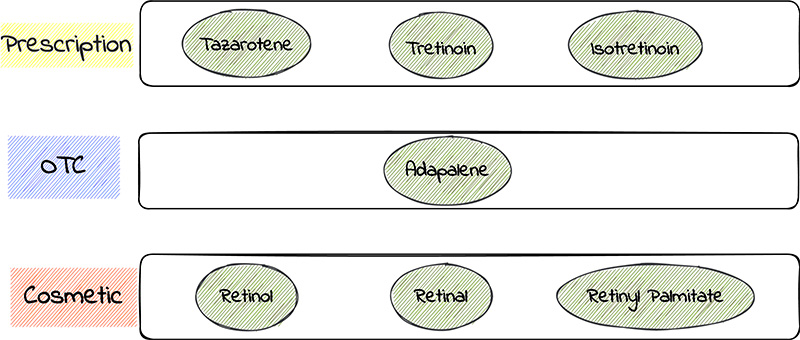
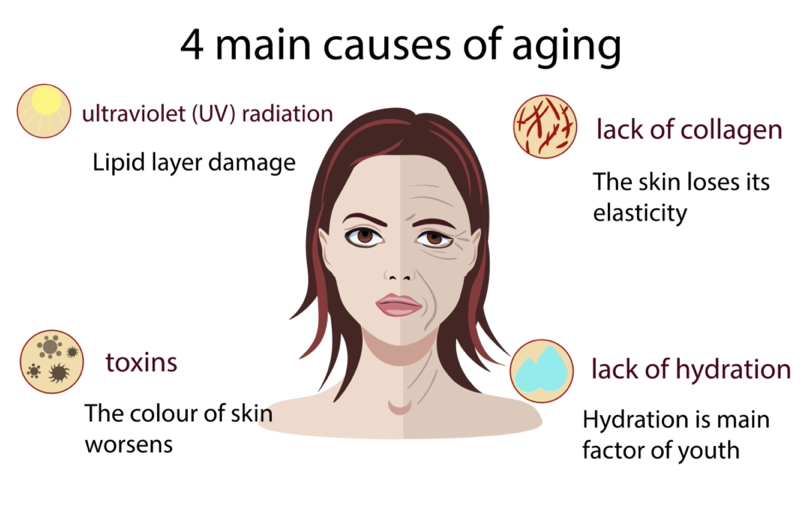
Read these tips when you start Retinol or Tretinoin in your skincare routine
- Always wear sunscreen when you’re out during the day. Retinol increases sun sensitivity of the skin which means your skin is very sensitive to UV light and can cause skin concerns like burns, melasma or even melanoma.
- Use retinol only at night.
- Do not mix Retinoids with any other ingredient without first reading about it thoroughly as it doesn’t gel up with most of the ingredients.
- Do not use it very close to your eyes, mouth, or nose.
- For sensitive skin types and beginners, start with a low concentration, like .25% & gradually increase the percentage to 1%.
- Never exceed the quantity of more than a pea size. Too much does more harm than good.
- Never forget to use it on the neck as well.
- Don’t apply it on damp skin. Pat the skin dry first.
- Don’t forget to layer it with a non-comedogenic moisturizer.
- Start with using it twice a week and then gradually increase the frequency every other night as your skin adjusts.
- Try and avoid any other potential irritants like acids or chemical exfoliants when you’re beginning your retinol journey. This can minimize your excess flaking or chances of over-exfoliation.
Who should not use Retinol or Tretinoin?
- If you’re trying for pregnancy, are pregnant, or are breastfeeding. DO NOT use any of the Retinoids.
- People with Rosacea and Eczema shouldn’t use Retinoids.
What other ingredients are Retinol or Tretinoin compatible with?
Niacinamide, Hyaluronic acid and Azelaic Acid
Extra tip when using Retinol or Tretinoin? (Only for experienced pros)
Exfoliate the skin before applying to maximize skin receptivity. (Just once a week)
How to handle a Retinol or Tretinoin burn or purge phase?
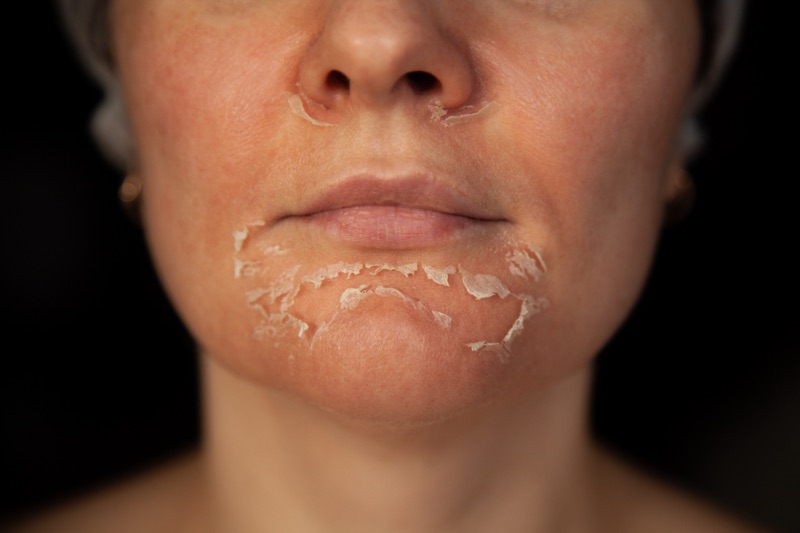
First, don’t panic. Skin will eventually come back to normal, but you can help it heal faster. See how
- Avoid using cleansers or moisturizers with fragrances.
- No makeup for a while.
- Use Thermal spring water to calm the skin (Try from La Roche Posay)
- Take cold showers or ice your face (wrapped in a thin cloth). Avoid hot showers at any cost.
- Don’t use any exfoliating fancy gadgets to wash your face, simply use your hands.
- Now give a lot of moisture and hydration to the skin for it to feel better. Like moisturizers loaded with ceramides (Helps in skin barrier) & Hyaluronic acid.
- After Moisturizer, seal the skin with a light layer of Vaseline. It locks in all the goodies we’ve given & lets the skin heal faster.
- Stop using any other exfoliants, acids, AHAs, BHAs, peroxides, and salicylic acid until you are completely healed.
- Glycerin and Aloe vera, both are great soothing & calming agents for the skin
- Product suggestion- Try Avene- Cicalfate + restorative protective cream
- DO NOT forget to apply sunblock before stepping outside. Remember your skin is already in a vulnerable state. UV rays at this point can make it worse.
Follow these points & your skin will be good in no time & remember, everyone does something wrong in the Retinoid journey, even aestheticians do. Trust me.
How to buy Tretinoin and Retinol? Does their packaging matter?
Absolutely! YES! Let me help you.
Retinol/Tretinoin packaging is literally everything, which surprisingly very few people know of & I really want you to be a pro when choosing or using your product. Air Exposure means retinol death. So read on,
There are 4 types of packaging in the market.
- Tubes (Best)
- Pump bottles (Better)
- Serum bottles (Okay)
- Jars (NAH)
Tubes are undoubtedly the best & the safest form to use any of the Retinoids. If you can’t find those, you can go for Pump bottle packaging but beware of the Jars with those big lids. They literally don’t make sense.
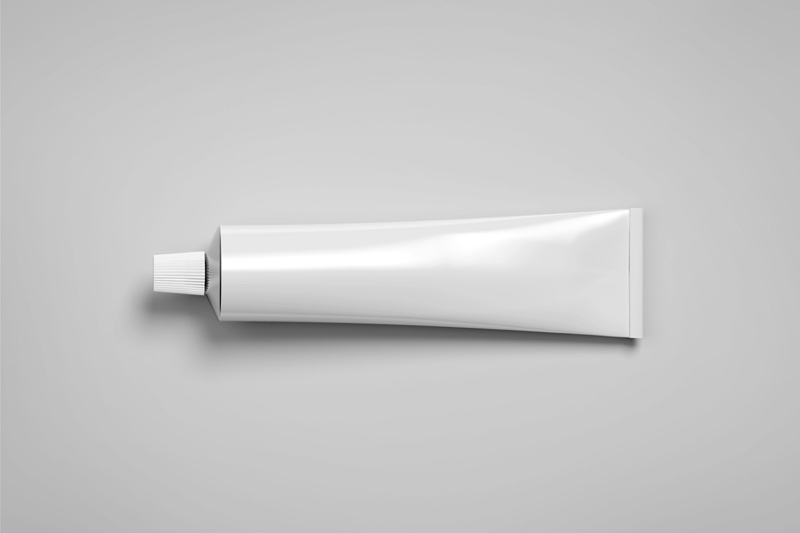
Does storage condition also matter? Very much!
Retinoids are not a stable ingredient in nature and perhaps they like staying in cool, dark places. Quite away from Sunlight to extend and maintain its shelf life. Hence, your bathroom cabinets could be a good place.
What are the alternatives if Tretinoin and Retinol don’t suit your skin type?
Salicylic acid: Salicylic acid is an FDA-approved beta hydroxy acid that is oil soluble and is ideal for oily skin and acne-prone skin types. It dissolves the oil and the dirt that’s clogging the pores, exfoliates the dead skin cells, and cleans the skin by going into a deeper layer. It works as a great exfoliating agent by reducing the overall sebum production and keeping the skin oil and bacteria-free. Salicylic acid is tolerated much better by the skin as acne medication, compared to tretinoin and retinol because it is milder in nature.
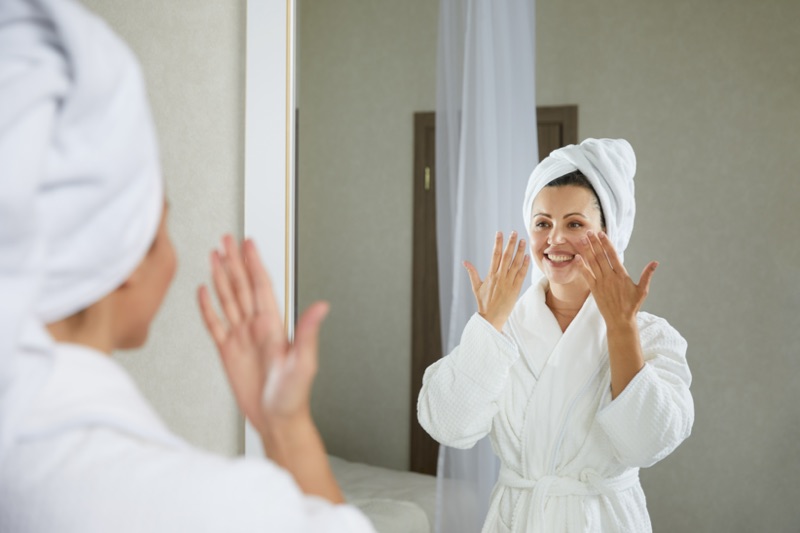
The Conclusion (Tretinoin vs Retinol – What’s Better?)
Tretinoin and Retinol are both brilliant variations of Retinoids but when it comes to choosing between the two:
Go for Retinol, if you’re struggling with mild acne and premature aging signs. If you’re struggling with moderate to severe acne and all kinds of aging signs, choose Tretinoin. Tretinoin is obviously more potent and effective but needs to be used carefully.
Love~ Beauty Stroll